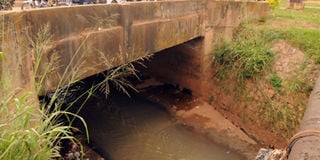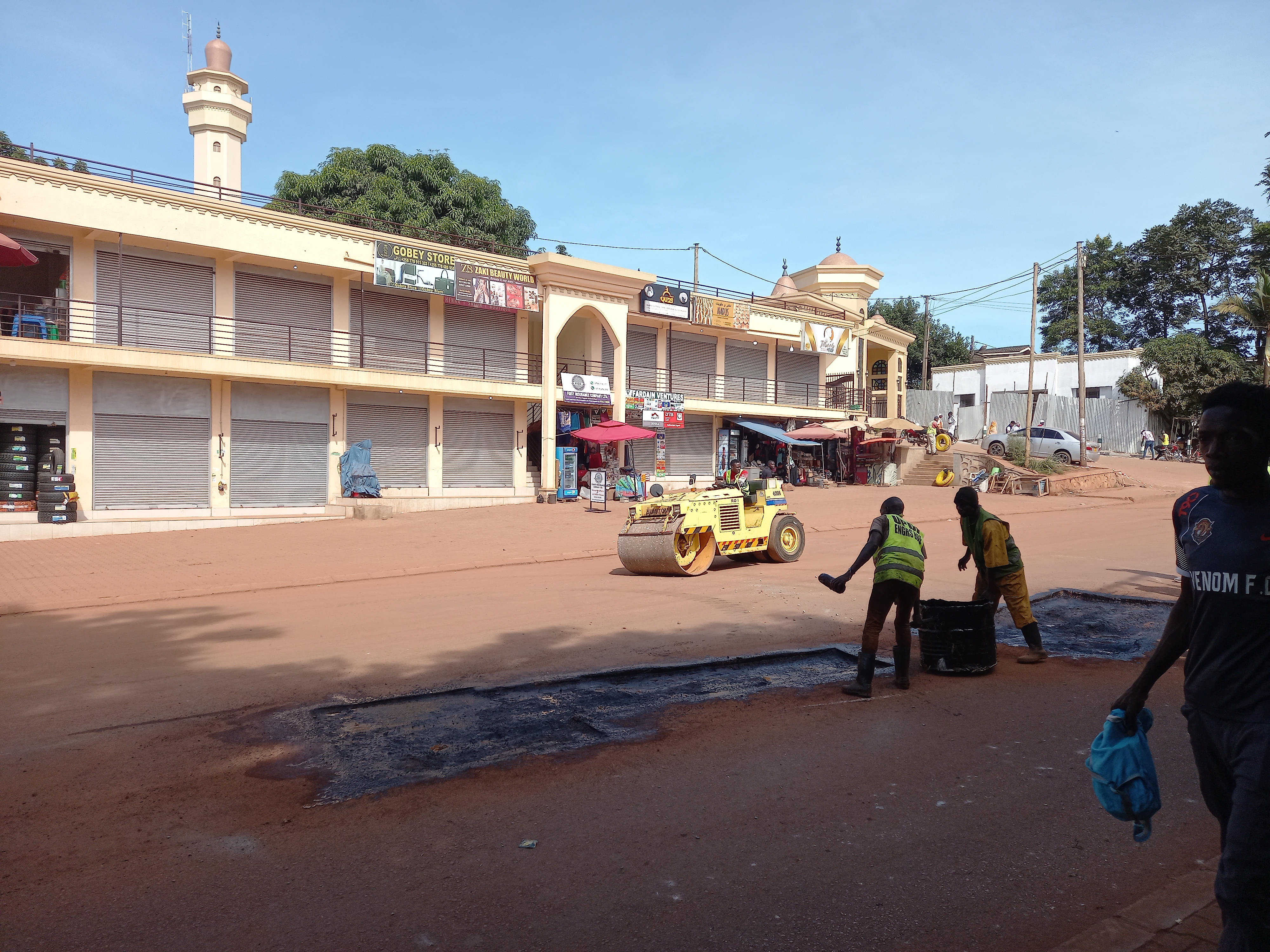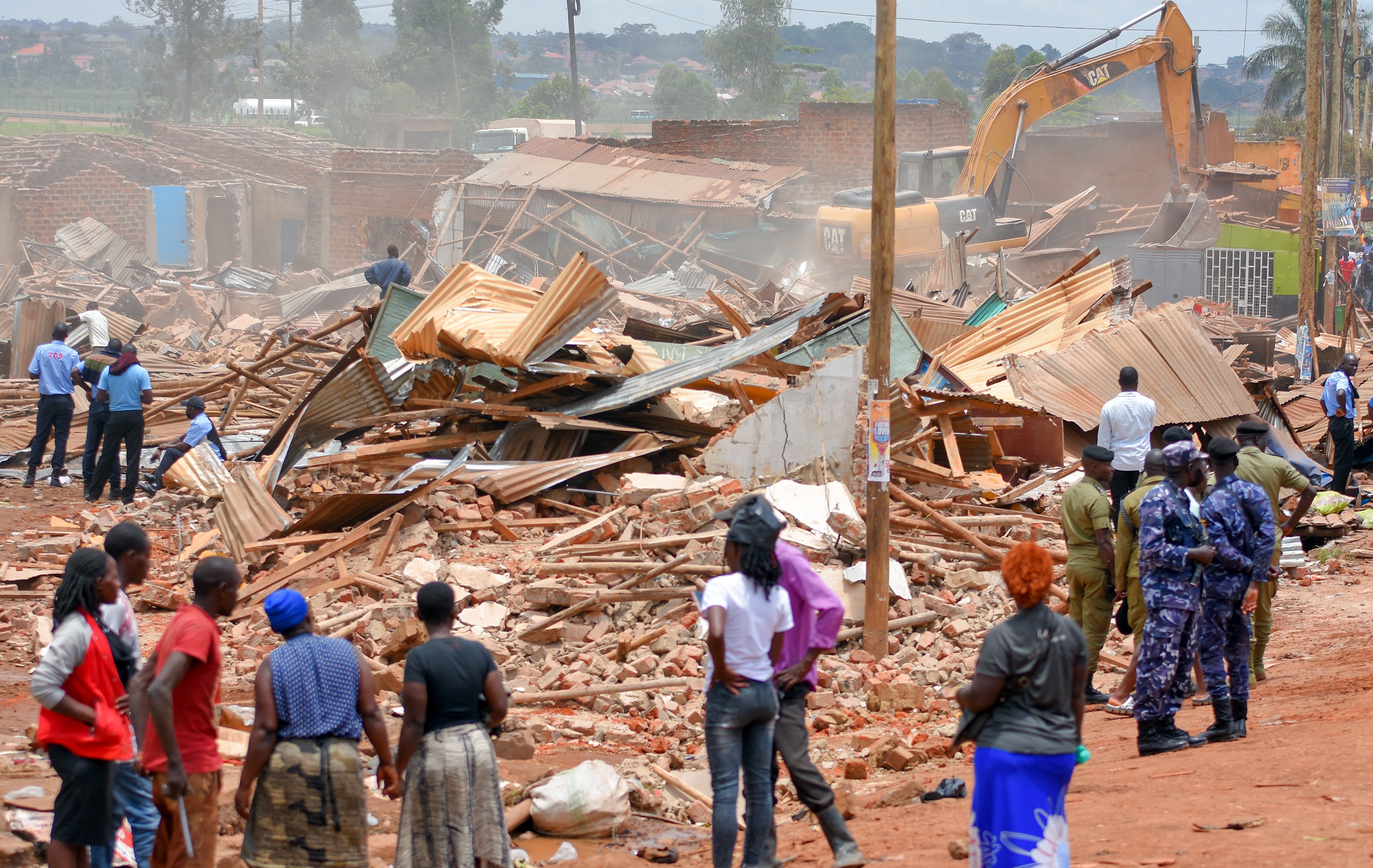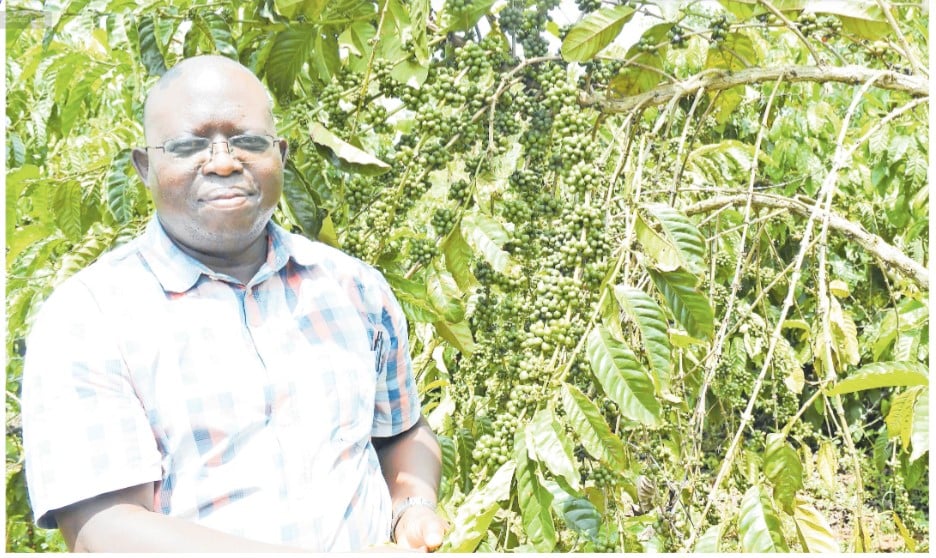
A section of the Nakivubo Channel in Kampala. Nakivubo Channel is nine-kilometre natural channel with a catchment
area straddling more than 27 kilometres. PHOTO | FILE
The local media has been awash with stories of Mr Hamis Kiggundu, a city real estate developer, building atop the Nakivubo Channel.
The new structure, which Mr Kiggundu under his company, Ham Enterprises, is erecting looks like an extension of his shopping mall on plots 26 and 28 in Nakivubo, downtown Kampala.
Following public uproar, on November 11, the city authorities sent Mr Kiggundu and his team a notice rooted in Section 46 of the Physical Planning Act, 2010.
The notice informed Ham Enterprises that it was “carrying out illegal developments on plot 26 and 28, Nakivubo” and ordered them to halt activities.
Has Ham Enterprises complied with the notice?
Not really, and observers say this has surprised almost no one that the construction activities have continued unabated under the watchful eye of police officers.
For now, it remains to be seen what the city authorities will do after the seven-day expiry of their notice.
Critics say, in all this grandstanding, what is not being discussed is the history and strategic importance of the Nakivubo Channel to Uganda’s capital, Kampala.
Kampala is commonly called the city of seven hills. Of course, it has gone on to sprawl out to more than just the original seven hills.
Being on a hill means the city also has plenty of low-lying areas. Nakivubo is one such area. In fact, it could be argued that Nakivubo is a reclaimed swamp.
Little wonder, more than 90 percent of the developed central Kampala area drains in Nakivubo Channel—a nine-kilometre natural channel with a catchment area straddling more than 27 kilometres that snakes its way through the slums of Kampala on its journey to the expanse of Lake Victoria, via Murchison Bay, in Luzira.
When was the Nakivubo Channel constructed?
The channel wasn’t “constructed” in the strictest sense of the word. It is a natural waterway from the swampy, low-lying areas of Kampala all the way to the lake.
That said; there have been refurbishment and expansion efforts.
Available literature indicates its first refurbishment was in 1958, based on topographical maps. Even then, this refurbishment didn’t prepare the channel to face the kind of pressure that the current Kampala population boom brings.
Early 20th-century drainage channel designs were constrained by limited hydrological understanding and reliance on empirical data. These designs often employed simplified assumptions and lacked the sophistication of modern computational tools.
As a result, the structural integrity and hydraulic capacity of these early structures may be compromised under current conditions.
Factors such as climate change, urbanisation, and altered land use patterns can further exacerbate these limitations, rendering these designs inadequate for contemporary needs.
The Nakivubo Channel has suffered these very challenges. The floods in Kampala after the odd drizzle are testament to this.
How have the rehabilitation plans played out?
From the 1958 refurbishment, the nearest conversation about Nakivubo Channel was in a 1999 World Bank report titled “Nakivubo Channel Rehabilitation Project.”
The report, among others, recommended that the channel be de-silted, realigned, widened, culverts constructed and trees planted along it.
The plan was to reduce the number of flooding events in urbanised areas of Kampala, reduce flooding in the Nakivubo Channel floodplain (think Lugogo, Bugolobi etc), improve access, traffic and aesthetics, among others. It is instructive to recognise that this report outlines plans for the channel’s refurbishment; not confirmation of its implementation.
What modern issues are, excuse the pun, inundating the channel?
Despite a proposed rehabilitation project in 1999 and ongoing maintenance efforts like de-silting, various research papers highlight persistent concerns about the Nakivubo Channel's performance.
Several documents describe the channel's ongoing struggles with siltation, debris buildup, and limited flow capacity, suggesting that past interventions did not fully resolve these issues.
A 2010 report further underscores these concerns by proposing a new project for the channel's "rehabilitation and expansion" to address the strain caused by both climate change and rapid urbanisation.
It essentially indicates that previous improvements were insufficient to handle the increasing demands placed on the system.
Additionally, research focusing on the Nakivubo Swamp, which receives wastewater from the channel, raises alarm about the swamp's inability to effectively purify the water.
These findings suggest that pollutants, including raw sewage from the Bugolobi sewage works, are likely passing through the swamp and into Lake Victoria, raising significant concerns about the channel's impact on the downstream environment and the quality of Kampala's water supply.
The persistence of these concerns after 1999 highlights the Nakivubo Channel's vulnerability to a combination of factors, including insufficient maintenance, increasing urban runoff, and the limitations of the associated natural purification systems. State actors haven’t dealt with these challenges identified decades ago.
Why is constructing structures on top of the Nakivubo Channel extremely detrimental?
Constructing on top of the channel exacerbates matters.
For one, as the primary drainage channel for Kampala, the Nakivubo Channel carries a substantial volume of stormwater.
Any construction would restrict its flow capacity, exacerbating the city's chronic flooding problems, which are a major concern.
Furthermore, building on the channel would obstruct essential maintenance activities such as de-silting and debris removal.
These two and more are crucial for maintaining the channel's functionality, as emphasised by multiple sources.
The presence of structures would make accessing the channel for these tasks incredibly difficult, leading to further blockages and diminished performance.
Moreover, the structural integrity of any construction on the channel would be at significant risk due to the fluctuating flow levels and the erosive force of the water, especially during intense rainfall. Building directly on the channel is also a direct contradiction of sound engineering practices.
Lastly, construction works on the channel would directly conflict with ongoing and proposed efforts to rehabilitate and expand it.
Also jeopardised are initiatives that aim to enhance the channel’s capacity and effectiveness in managing Kampala's stormwater.
Observers contend that the decision of city authorities to push back against environmental degradation clothed as real estate investment is as timely as it is existential.








